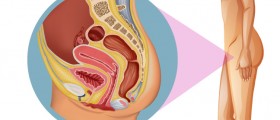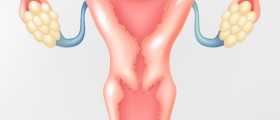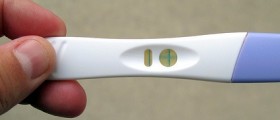
An excessive and abnormal thickening of the uterus, medically called endometrial hyperplasia, a proliferation of the tissues that line the uterus, is a gynecological condition that affects many women. The endometrium is the lining of the uterus that grows and thickens each month during a woman's reproductive years, and each month it is eliminated trough menstrual bleeding when pregnancy does not occur.
Causes of thickening of the uterine lining
All changes in the lining of the uterus are regulated by two female hormones, estrogen and progesterone. Estrogen builds the endometrium in the first stage of the menstrual cycle, while progesterone takes care of its growth. Hormonal imbalances, like high levels of estrogen and low levels of progesterone, can lead to uncontrolled cell growth in the uterus lining. If endometrial hyperplasia is not treated, it can lead to even more abnormal cell growth and potentially to cancer.
As for the reasons why these hormonal imbalances occur, menopause is a common reason and this is why a thickened uterine lining is more common in older women who no longer menstruate. Other risk factors include a history of irregular menstrual cycles, problems with the ovaries that lead to a lack of ovulation, obesity and diabetes are the most common causes of a thickened uterine lining. Sometimes hormone replacement therapy causes endometrial hyperplasia too.
Symptoms of thickening of the uterus lining
Since the uterus is an internal organ, it is not easy to physically notice there is something wrong with the endometrium. However, some of the symptoms may indicate that endometrial hyperplasia is the problem, and if these signs occur, it is important to see a gynecologist and have a thorough checkup. Those symptoms may include lower abdominal pain, bleeding or spotting between periods, heavy and prolonged periods, and unusual and heavy vaginal discharge.
Diagnosis of and treatment for thickening of the uterine lining
Before the treatment is decided upon, it is necessary to perform several tests and to come to a definitive diagnosis. A Pap smear is usually done in order to detect potential cellular changes of the cervix. Ultrasound is used to determine the exact dimensions and thickness of the endometrium, as well as to check for potential infections that may be present and could cause the same symptoms.
Sometimes it is necessary to perform a biopsy (taking a tissue sample) of the uterine lining in order to inspect the sample for cancer cells. Similarly, curettage uses a device called a curette to collect a sample that is then sent to a lab for testing.
Finally, hysteroscopy is a procedure that uses an instrument similar to a telescope, which allows medical professionals a closer look at the uterus.
There are two treatment options for thickening of the uterus lining — both medications and surgery can be used to treat endometrial hyperplasia. Medications consist of the hormone progesterone, which causes the lining to shed and prevents abnormal thickening in the future.
Surgery is usually the chosen treatment option only if cancer is diagnosed, because it involves hysterectomy, which is the complete removal of the uterus.
Endometrial hyperplasia or thickening of the uterus as such is not cancerous, but women diagnosed with it are considered to be at a higher risk of getting cancer, which is why they require frequent check-ups at the gynecologist. If diagnosed and treated on time, these abnormalities do not prevent a perfectly normal and healthy life.

















Your thoughts on this
Loading...